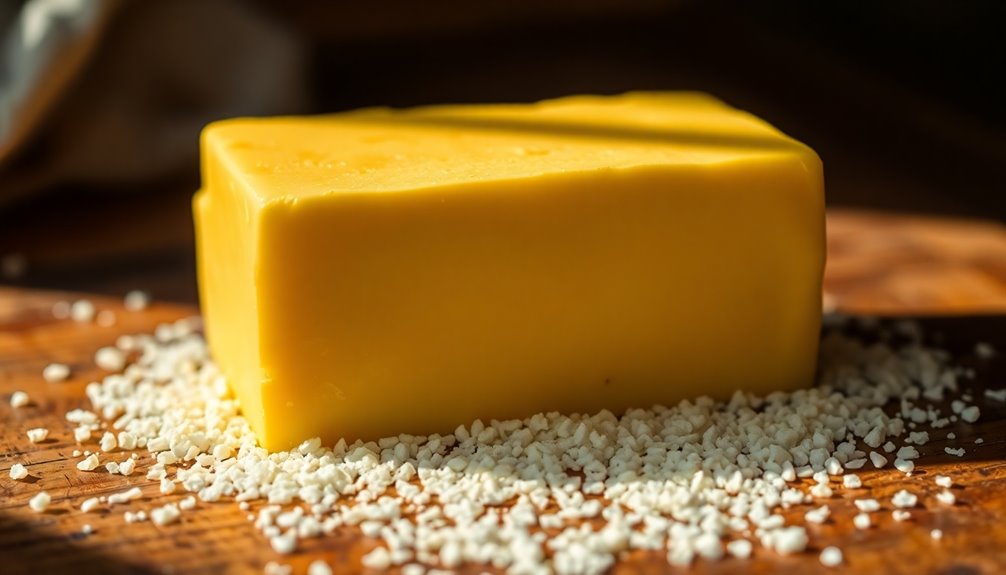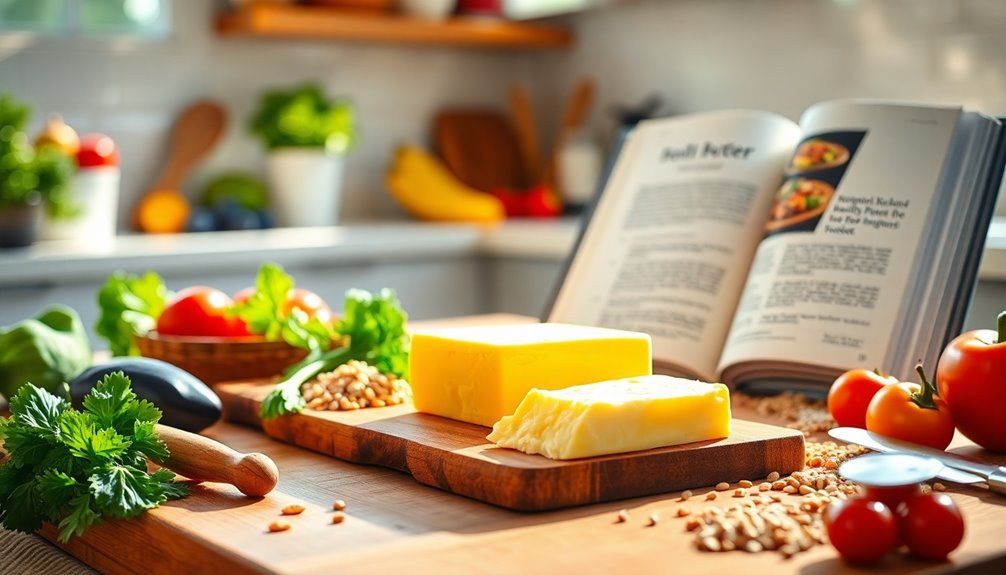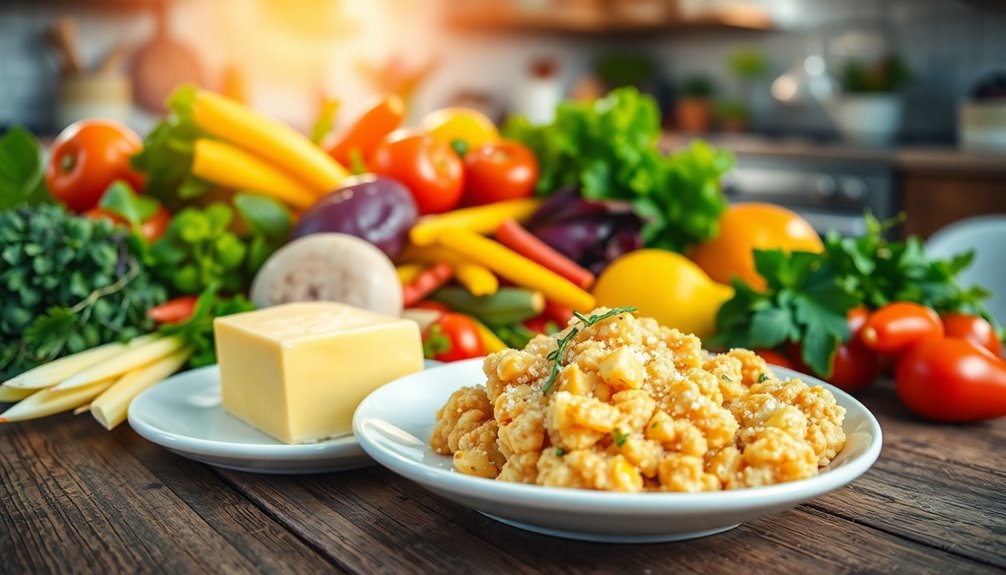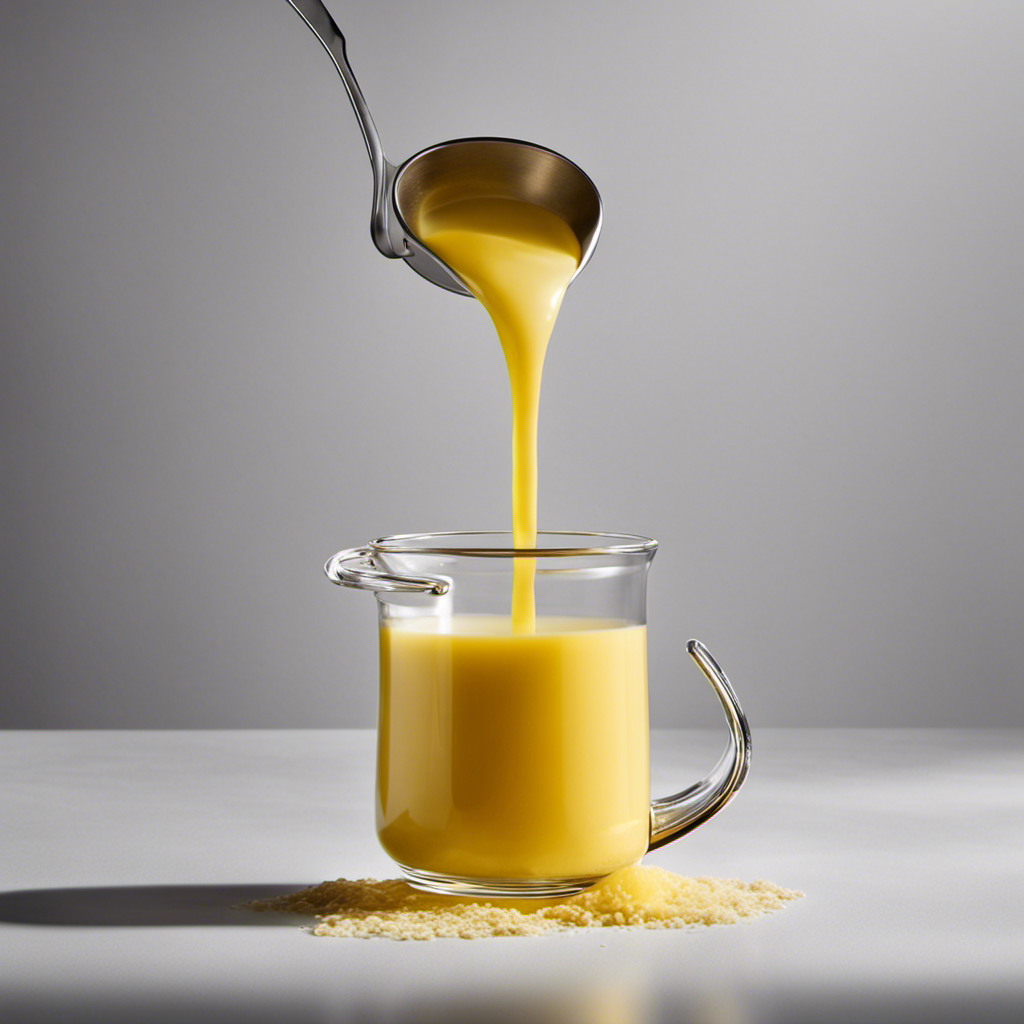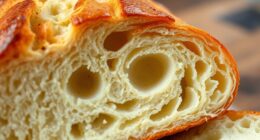No, butter doesn't have starch. It's mainly made up of milk fat, with about 80-82% of its composition consisting of fat. Butter contains negligible carbohydrates, which means you won't find any starch in it. The belief that butter has starch is a common misconception. Instead, it offers essential nutrients like vitamins A, D, and E, making it a rich source of healthy fat. It's important to understand these components when considering your diet. If you stick around, you'll discover more insights about butter's nutritional benefits and how it fits into your meals.
Key Takeaways
- Butter is primarily composed of 80-82% milk fat and contains minimal to no carbohydrates, including starch.
- Common misconceptions suggest butter contains starch, but it is not a carbohydrate source.
- The fatty acid profile of butter consists mainly of saturated and monounsaturated fats, not starch.
- Butter does not break down into glucose or any other forms of starch during digestion.
- For cooking needs, clarified butter (ghee) is a pure fat alternative, without any starch content.
Understanding Butter Composition
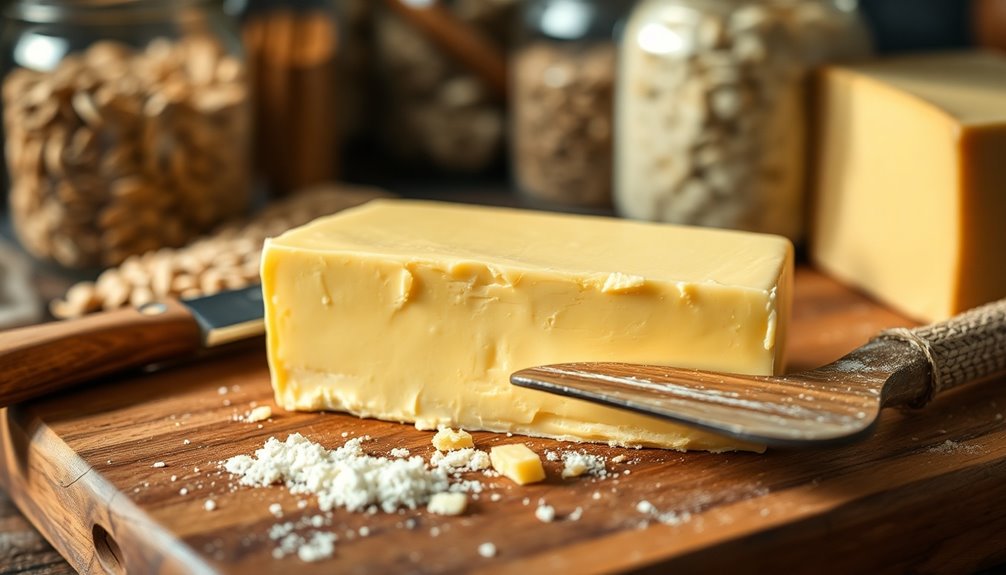
When you think about butter, it's essential to understand its composition. Butter primarily consists of 80-82% milk fat, with 16-17% water and 1-2% milk solids other than fat. If you enjoy salted butter, it might contain an additional 1-2% salt. Furthermore, butter's versatility allows it to be used in a variety of culinary applications, from baking to cooking.
The fatty acid composition is notable too; about 70% of the fat is saturated, 25% is monounsaturated, and only around 2.3% is polyunsaturated. Among the saturated fats, about 11% are short-chain fatty acids, including palmitic, oleic, myristic, and stearic acids. Additionally, the production of butter requires 20 liters of whole milk for every kilogram produced, highlighting its concentrated nature.
Nutritionally, each tablespoon of butter packs 102 calories, containing 12 grams of total fat and 31 milligrams of cholesterol. It's also a rich source of essential vitamins like A, D, E, and K2, along with minerals such as calcium and phosphorus.
The production process involves churning cream to separate the milk fat from buttermilk, resulting in various types of butter like unsalted, salted, cultured, and clarified. Most butter in the U.S. is made from pasteurized cream, ensuring safety and quality.
Understanding this composition helps you appreciate butter's unique flavor and nutritional benefits.
What Is Starch?
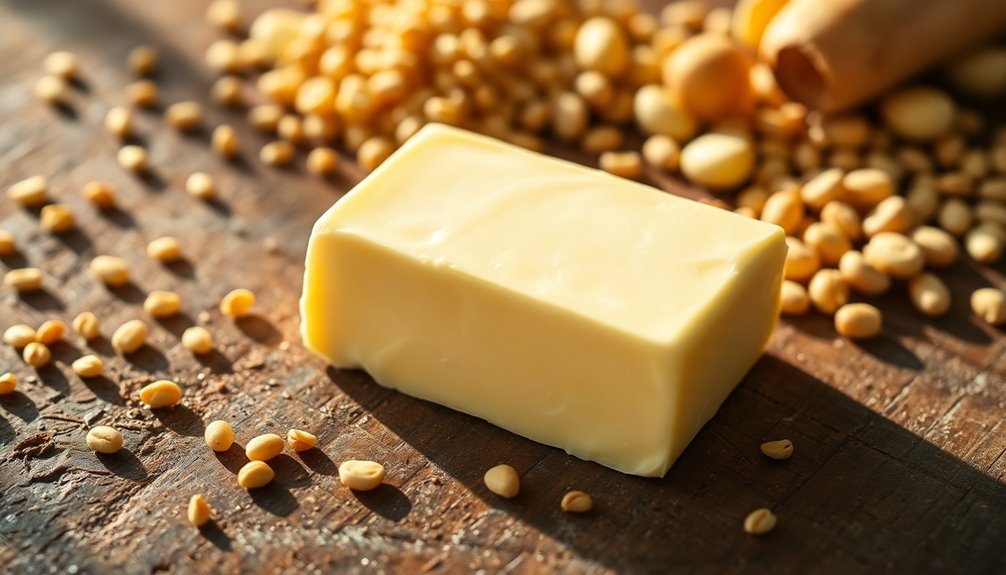
Starch is a vital carbohydrate that serves as a major energy source for both humans and animals. It's a polymeric carbohydrate made up of several glucose units connected by glycosidic bonds, with the chemical formula (C6H10O5)n.
You'll find starch as a tasteless, fluffy white powder that's insoluble in cold water, alcohol, and other solvents. Starch is composed of polysaccharides with 1,4 linkages between glucose monomers, making it a crucial component in our diets.
There are two main forms of starch: amylose, which is a linear polymer, and amylopectin, a branched polymer. In your diet, starch can be categorized into rapidly digestible starch (RDS), slowly digestible starch (SDS), and resistant starch (RS). RDS is found in cooked foods like potatoes and bread, converting quickly to glucose.
SDS, however, is broken down slowly and comes from cereal grains, while RS passes through your digestive system mostly untouched, behaving like dietary fiber.
Starch is produced by all green plants as a way to store energy and is commonly found in grains, vegetables, fruits, and legumes. It's often used in cooking as a thickening agent and has significant roles in both dietary and industrial applications.
Nutritional Breakdown of Butter
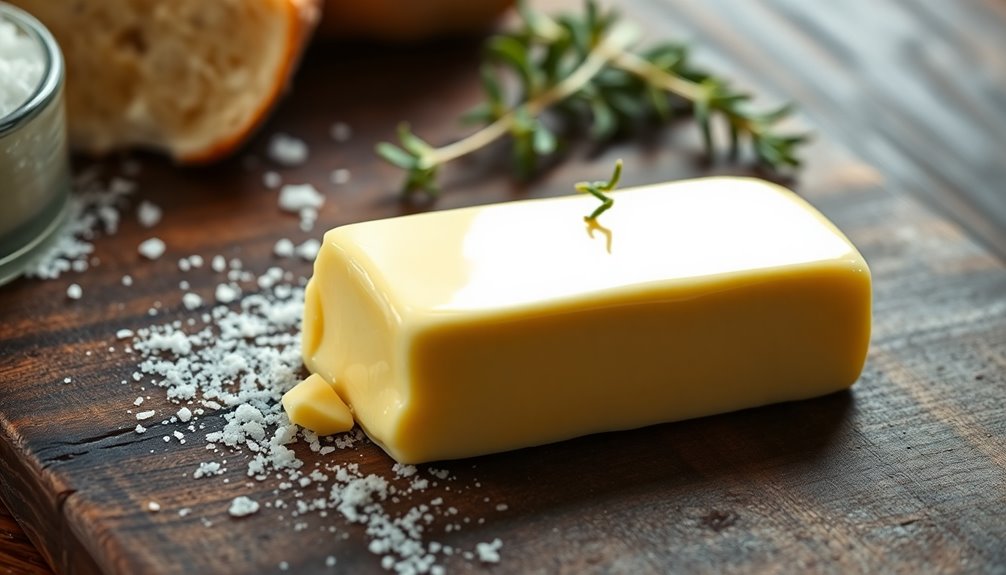
Butter is a rich source of calories and essential fats, making it a popular choice in many diets. Each tablespoon (14 grams) contains about 102 calories, primarily derived from its fat content, which is 12 grams per tablespoon.
You'll find that butter has no carbohydrates, fiber, or sugar, and only a trace amount of protein—less than 1 gram per tablespoon. Additionally, butter is composed of about 80% milk fat, which contributes to its creamy texture and flavor. The fat structure of butter plays a key role in its ability to remain solid at room temperature.
When looking at the types of fats, about 7 grams are saturated fat, making up over 66% of the fatty acids. There are also 3 grams of monounsaturated fat and 0.5 grams of polyunsaturated fat. Importantly, butter contains negligible trans fat, less than 0.50 grams per tablespoon.
In terms of vitamins and minerals, one tablespoon provides 11% of the Daily Value (DV) for Vitamin A, along with small amounts of Vitamin E, Vitamin K, calcium, and phosphorus.
It also contains about 31 milligrams of cholesterol and varying sodium content, depending on whether it's salted or unsalted. Additionally, butter includes small amounts of carotene and other fat-soluble pigments, along with a water content of approximately 16%.
Types of Fats in Butter

A significant portion of butter's composition consists of various types of fats, each contributing to its unique flavor and nutritional profile.
Butter is primarily made up of around 66-70% saturated fatty acids, with palmitic acid being the most abundant, comprising about 28-31% of the total fat content. Other saturated fats include stearic acid (11-12%) and myristic acid (10-11%), along with butyric acid, which is unique to milk fat from ruminants. Butter is essential for pairing with various breakfast and snack items, enhancing items like bagels, pancakes, and scones. Consuming butter in moderation can be part of a heart-healthy diet when balanced with other nutrient-rich foods. Moreover, the presence of antioxidants in butter can offer additional health benefits.
In addition to saturated fats, butter contains about 25-29% monounsaturated fats, primarily oleic acid, which makes up 22-24% of the total fat. Palmitoleic acid is present in smaller amounts, along with other minor monounsaturated fatty acids.
Butter also includes minimal amounts of polyunsaturated fats, making up about 2.3-3.4% of the total fat content. Linoleic acid and alpha-linolenic acid are the primary polyunsaturated fats.
Beyond fatty acids, butter contains cholesterol and phospholipids, along with naturally occurring trans fats and short-chain fatty acids. This diverse fatty acid profile plays a vital role in butter's culinary uses and overall characteristics. Additionally, butter is high in saturated fat which contributes to its rich texture and flavor.
Health Benefits of Butter
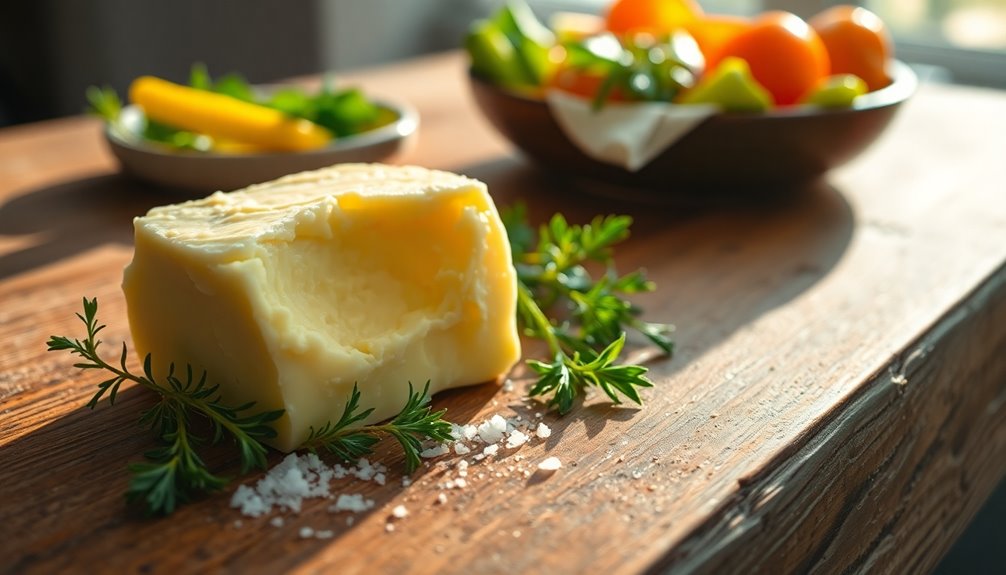
Rich in various types of fats, butter also offers a plethora of health benefits that contribute to overall well-being.
It's packed with essential vitamins like A, D, E, and K, which support thyroid health, bone growth, skin health, and various bodily functions. The selenium in butter is another vital mineral that boosts your health. Additionally, butter contains important nutrients that help in the absorption of fat-soluble vitamins. Regular consumption of herbal alternatives for botox-like effects can complement the skin health benefits provided by butter. Furthermore, butter has been valued since ancient times for its nutritional properties, making it a cherished ingredient in various culinary traditions. In addition, the historical significance of butter in diverse cultures highlights its role as a staple food that has been celebrated for centuries. Butter also contains antioxidants that may reduce inflammation, adding to its health benefits.
Butter contains conjugated linoleic acid (CLA), an anti-cancer agent that also supports muscle building and immunity. High levels of beta-carotene in butter can lower your risk of lung and prostate cancers, while the saturated fats provide strong anti-tumor properties.
Additionally, the antioxidants help protect your body from free radical damage.
For specific body systems, butter aids in bone health with its calcium and vitamin D content, supports skin healing, and may slow vision loss due to age.
Cholesterol found in butter is crucial for children's brain development, and it even helps protect against gastrointestinal infections.
As a quick energy source, butter doesn't contribute to body fat storage. It may also promote fertility in women and supports cholesterol metabolism, making it a versatile addition to your diet.
Common Misconceptions
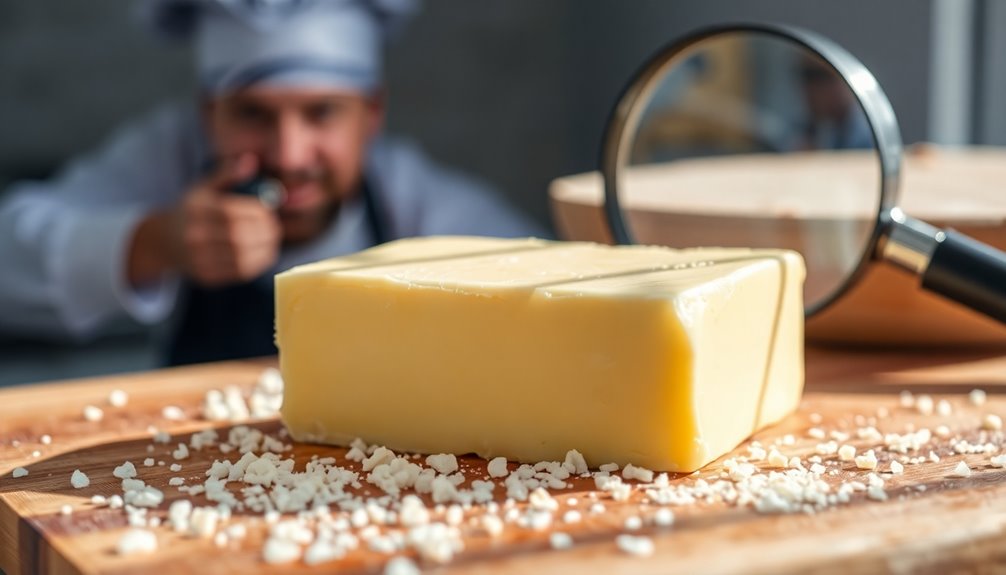
Many people mistakenly believe that butter contains starch, leading to confusion about its nutritional value. In reality, butter is essentially starch-free.
It's primarily composed of milk fat, with at least 80% fat content, and contains minimal to no carbohydrates, including starch. When you look at its nutritional profile, you'll find that butter provides around 100-102 calories per tablespoon, with the fat being predominantly saturated. Additionally, it's important to note that butter does not contain carbohydrates, which further emphasizes its unique composition. Regular consumption of foods low in carbohydrates, like butter, can support improved respiratory health and overall wellness. Essential oils can also promote respiratory health when used in aromatherapy. For instance, eucalyptus oil is known for its decongestant effects and may help with breathing difficulties.
Some may think that butter breaks down into glucose or other forms of starch, but that's simply not true. Butter's composition reveals that it doesn't include any form of carbohydrate, including sugars.
This misconception often arises in broader dietary discussions, especially regarding high-fat diets, but it's crucial to recognize that butter stands apart in this regard.
While butter is rich in vitamins A, D, and E, along with other nutrients like calcium, it doesn't contribute to your carbohydrate intake.
Alternatives to Butter
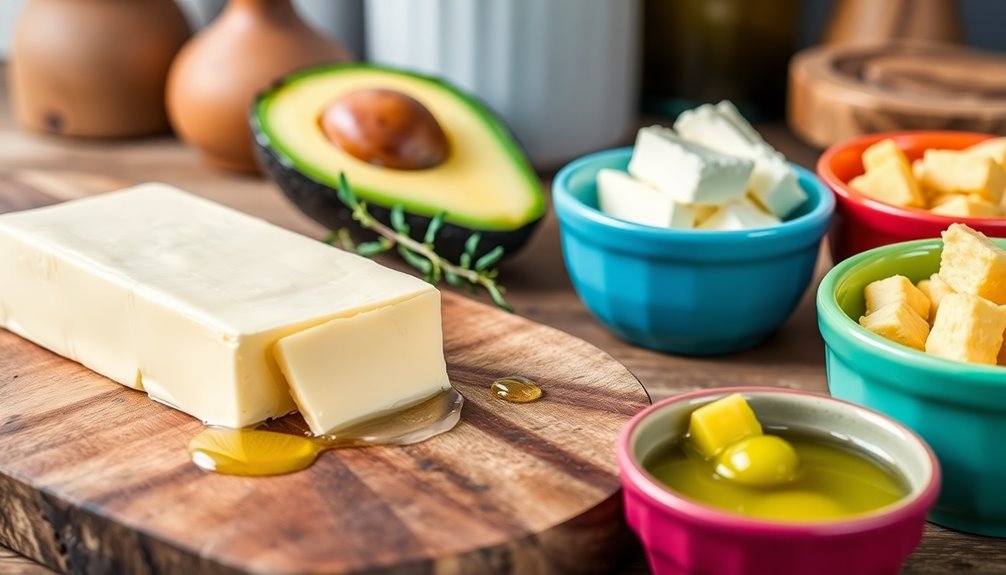
Exploring butter alternatives can open up a world of options for your cooking and spreading needs. One popular choice is clarified butter, or ghee, which is almost pure milk fat and boasts a high smoke point. Butter is made by separating cream from milk and churning, making it a versatile ingredient in many cuisines. It's perfect for cooking, especially in Indian and Middle Eastern dishes, and doesn't require refrigeration. Additionally, state-specific benefits can play a role in your overall dietary choices as you consider health and financial implications. Aromatherapy with essential oils can further enhance your well-being as you make healthy lifestyle choices. Establishing good oral hygiene habits early on can also be beneficial for your overall health. Moreover, it's important to be aware of the sugar content in food products, as high levels can lead to health issues.
If you prefer something spreadable straight from the fridge, consider dairy blends. These combine butter with up to 50% edible vegetable oils, maintaining that familiar butter taste while offering a smoother texture. Reduced-fat dairy spreads are another option, containing 30% to 60% fat, with half being milk fat. While they provide a lower-fat alternative, they're not great for cooking due to their moisture content.
For an even lighter choice, low-fat dairy spreads contain less than 30% fat. They're perfect for spreading on bread but aren't suitable for cooking either. With so many options available, you can easily find a butter alternative that fits your dietary needs while still enhancing your meals and snacks.
Frequently Asked Questions
Can Butter Be Part of a Gluten-Free Diet?
Yes, butter can definitely be part of a gluten-free diet! Since it's made from cow's milk and cream, it naturally doesn't contain gluten.
Just make sure you choose plain, unsalted butter to avoid any potential gluten-containing additives.
To be safe, always check labels for gluten-free certifications and watch out for cross-contamination in your kitchen.
How Does Butter Compare to Margarine in Starch Content?
When comparing butter to margarine, you'll find that both contain negligible amounts of starch.
Butter is primarily composed of about 80% fat, while margarine is made from vegetable oils.
Neither has significant carbohydrates, so you won't need to worry about starch in either option.
If you're choosing between them, focus on the fat content and your dietary preferences, rather than starch, as it's not a concern in either product.
Is There Any Starch in Clarified Butter?
Clarified butter doesn't contain any starch.
During the clarification process, you remove milk solids and water, leaving behind almost pure butterfat. This means it's free from carbohydrates, including starch.
If you're looking for a cooking fat with a high smoke point and rich flavor, clarified butter is a great choice.
Plus, its stability makes it perfect for various cooking methods, enhancing your dishes without the worry of starch content.
Does Cooking With Butter Alter Its Starch Content?
When you cook with butter, it doesn't alter its starch content because butter doesn't contain any starch to begin with.
Whether you're sautéing, baking, or grilling, the fat in butter remains unchanged, and its nutritional profile stays consistent.
You can enjoy the rich flavors and cooking benefits of butter without worrying about any starch being introduced during the cooking process.
It's all about the fat, not carbohydrates!
Can Butter Cause Digestive Issues Related to Starch?
Butter itself doesn't contain starch, so it won't directly cause digestive issues related to starch.
However, if you consume butter in large amounts, it can lead to high blood fat levels, which might cause inflammation and other digestive problems for some people.
You should be mindful of how much butter you eat, as excessive consumption can contribute to health problems.
Balancing your diet with healthier fats can help mitigate these risks.
Conclusion
In conclusion, butter doesn't contain starch, making it a pure fat source. Its rich flavor and texture can elevate your dishes, while its health benefits, when consumed in moderation, can support a balanced diet. Don't let misconceptions steer you away from this delicious ingredient. If you're looking for alternatives, plenty exist, but nothing quite matches the taste of butter. So, enjoy it wisely, and savor the richness it brings to your meals!
